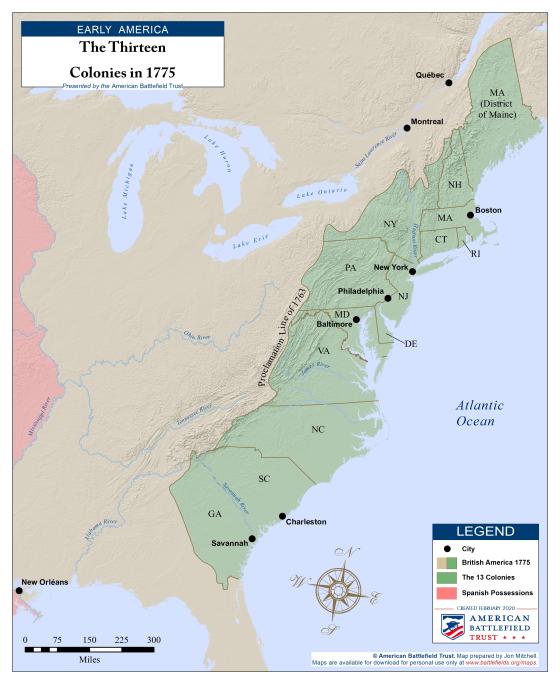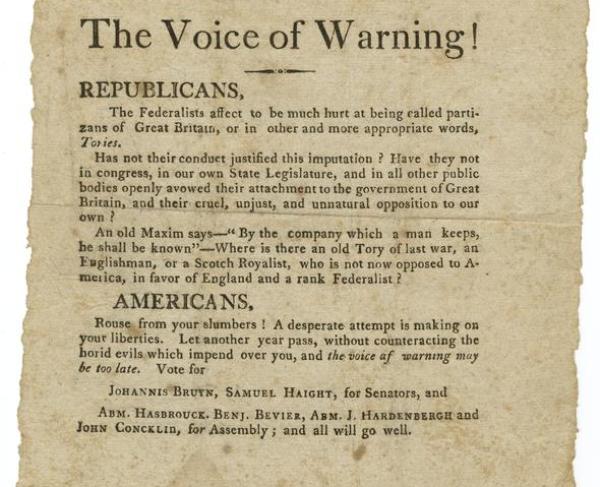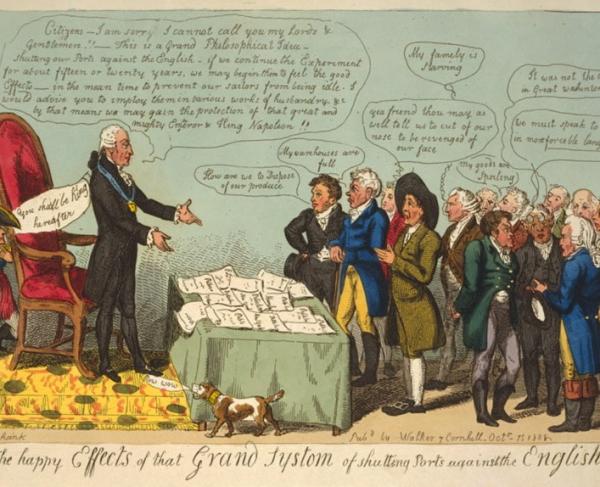An Emerging Identity: Ruling Colonial America

When we look across the United States today, we see a vast array of different cultures and identities trying to coexist as Americans under one banner and national creed of ideals. The origins of these beliefs trace themselves back hundreds of years to our colonial brethren. But as we often prefer to identify with our local customs and often proudly recite our loyalties to our home states, this is not something inherently new. Colonists, too, viewed themselves in the regional sense long before there was any call for a continental identity. And as a result, colonial governors were often products of these environments that were dependent on local interests above those of neighboring colonies.

To peel back these layers, we must first recall how the colonies came to be. Many of the earliest settlements, such as Roanoke and Jamestown, were given charters by the British Crown to establish a foothold in the middle-Atlantic region. The Pilgrims who landed at Plymouth, Massachusetts, were different. The Pilgrims came not for the Crown, but to escape the religious extremism they believed the Church of England was pushing on Puritans. They were also less interested in developing large plantations than their southern-European relatives. Smaller farms were preferable in the north while the climate and soils in the southern regions allowed for large plantations to develop. The simple difference here helps us understand how the regional identities of North and South would emerge in the coming decades and centuries.
By the 1670s, the eastern regions of North America had established several colonies that began to differ in identity. Coastal ports were emerging and establishing forms of merchant commerce, and various European ethnic groups had formed autonomous communities. Virginia and Maryland had become the epicenter of English influence while Swedish immigrants settled in New Jersey and along the Delaware River. The Dutch had claimed Manhattan Island as New Amsterdam, and New England saw encroaching white colonists further into the unexplored continental interior. Contact with Native Americans had existed since the very first colonists landed in the New World. These interactions wildly varied depending on a combination of factors: how each side interpreted the motives and actions of the other, and whether leaders of each side sought a peaceful coexistence or one of eliminating the other from the land. When William Penn first settled Philadelphia in the 1680s, he sought to impose laws that forbid white settlers from claiming Native lands without legal consent. Unfortunately, Penn’s absence for an extended period of time did nothing to convince the settlers to follow his suggestion.
Since London saw the advantage by the mid-seventeenth-century in encouraging settlers to colonize the eastern portions of North America, it was quickly able to lay claim over much of the territory. Other European nations, such as France and Spain, were far more committed to their economic holdings in the Caribbean. Make no mistake, the British, too, shared this view of her own Caribbean interests. But the genie was out of the bottle, and the more success that came from white settlements in North America, the more Europeans that came. Naturally, as communities developed, leaders were put forth to organize the common good and establish societal structures that would protect the interests of the Crown and the people. However, English authority over the existing colonies did not become paramount until the early eighteenth century. And even as it did, that does not mean the colonists emulated everything from the Old World. In fact, because many had come to the New World to escape the old one, they often only carried with them what they liked about the old one. This reciprocated feeling among early American colonists saw an autonomous spirit in governance; one that took English common law and new modes, such as natural law, and combined them to form a diverse, widespread belief in localized control over towns and communities. Where London came in was to provide a top-down monarchial overseer to ensure continued allegiance to what the Crown dictated. This arrangement would largely go untested until the 1760s.
Every colony was different in how its government was structured and functioned. Some, such as Massachusetts, Rhode Island, and Connecticut, were much more localized and less concentrated to a central governing power. Colonial assemblies, and sometimes governor’s councils, presided over government duties while local court systems served at the pleasure of the Royal Governor, who was appointed directly by the King. Other colonies, such as Virginia, held more centralized assemblies, like the House of Burgesses, that reflected the plantation gentry who would become the first American aristocracies. Their responsibilities all varied depending on how the colony’s government was structured; however, ultimate authority was vested in the governor’s hands because they were a direct line to the British Crown.

In times of war or unrest, it was the colonial governors who effectively served as the chief executives (think the role of the president) to marshal a militia or issue proclamations that would call on the citizenry to respond. One of the most trying reoccurrences throughout the colonial era was the continued wars with Native American groups along the outskirts of the colonies. Most of the colonies had been granted land proclamations that extended deep into unknown areas west of where most colonists resided. Their claims were royally issued, but this did nothing to appease Native Americans who continually sought to resist encroachment by the Europeans. In some cases, treaties were established, but they were often ignored or broken by land-hungry white settlers or disgruntled bands of Native warriors out to scare them off. Many instances in the first decades of the eighteenth century, particularly in Massachusetts and Virginia, saw the real threat facing the coexistence between the two sides as deadly conflict increased. Even after the conclusion of the Seven Years War in 1763, and with the proclamation that effectively created a western boundary along the Appalachians, settlers continued to move west and confront resistance among Native groups.
As tensions between some colonists and British authority increased in the 1760s, colonial governors sought to squash any forms of rebellion or lawlessness. Remember, these were politicians loyal to the King. One such lieutenant governor, Thomas Hutchinson of Massachusetts, came to see how far some of the mob were willing to go. Rioters broke into his house in 1765 over his refusal to denounce the Stamp Act, chased his family out, and destroyed everything they could. Unfortunately for Hutchinson, his superior had left him in charge while he made the case in London, and his trying to straddle the growing calls from Boston for rebellion with British authority provided him no apparent outcome for success. He was eventually replaced by a military governor, British Gen. Thomas Gage, in 1774.
Further south, another colonial governor with sympathies for the Crown tried to stave off rebellion within his colony. The illegitimate son of Benjamin Franklin, New Jersey’s governor William Franklin, had been quite popular among the citizens of his colony. Even as events began to spiral relations with the mother country, Franklin held the trust of his people, many of whom were staunch supporters of the Crown and considered themselves British subjects. This all changed when private letters revealed that Franklin had been secretly conspiring to undermine and spy on Patriot meetings in the colony. Further, when his father returned from London in 1776 as a devoted Patriot, Franklin remained an outspoken supporter of the King. New Jersey patriots were outraged, and newly elected members of the colonial assembly placed him under arrest. He would remain in custody until released on a prisoner exchange in 1778. He then moved to New York City – the British army garrison and headquarters of commander in chief Sir Henry Clinton. Franklin worked for the next three years to inspire Loyalist uprisings throughout New Jersey. He would leave for England in 1782, never to return, and never to mend his relationship with his father.
Virginia also saw its last colonial governor exercise his powers to retain British authority over the colony. As Virginian assemblymen became more outspoken in their alliance with Massachusetts, royal authority became at odds and often dangerous to their movements. The royal governor, Lord Dunmore, who had recently concluded his warring with Native American groups in modern-day West Virginia, tried several methods to defuse the situation in Virginia. However, when he attempted to disarm the militia, it triggered a violent response that forced a wounded Dunmore to take refuge on a ship anchored in the York River. From there, he directed loyalists to sack and raid the plantations and homes of rebel leaders. He also famously issued his “Proclamation” that called for all slaves to abandon their masters and plantations and join the British army to fight against the rebels. In November and December, he commanded his Ethiopian Regiment in two battles; though the regiment was soon disbanded because its numbers were devastated by smallpox. Dunmore’s final assault on Virginia came on the first day of 1776, where he ordered the torching of Norfolk. He left for England soon after.

These few examples show how allegiances radically changed in the 1770s among citizens and government authorities. In some cases, elections changed the identity of its council members overnight from one side of the political battle to the other. Recall, as the Revolution approached, the colonists themselves were divided on the issue. As John Adams famously declared, only about a third of the colonists favored independence. Another third wanted to remain British subjects while the last third of colonists were indifferent and tried to remain out of the conflict altogether. For some, the rise of Patriot hostility toward the British Crown seemed like anarchy and disloyalty. It was the responsibility of colonial governors to mend these fractions and try to strike a balance between a colonist’s right to protest and assemble while suppressing legitimate concerns for rebellion. By 1774 and 1775, these fears overlapped onto many perceived natural rights. Royal governors and their allies actively suppressed, where they could, patriot assemblies and petitions declaring their grievances with British taxation and aggression. But as the colonies grew closer to declaring independence, it became impossible for royal governors to remain in power. All were ousted, and their royal governments disbanded and replaced with American state governments as the Continental Congress approved the Declaration of Independence on July 4, 1776.
It can be lost on us today how the emerging identities of the colonies reflect current similarities and differences within the individual states of the country. As regional influences often dictated local and continental interactions then, so too, as they do today. How we should view colonial governors can largely be found in how we view our state’s governors today. Many current governors retain much of the authority given to royal governors in the seventeenth and eighteenth centuries. As the Philadelphia Convention in 1787 debated the size and shape of the executive branch in the new federal government, all delegates were picking and choosing what worked and what hadn’t with the former colonial governors. If we are to understand how the role of the president was originally intended, and what the office was created to do – and unable to do – we can study the many governors of the British American colonies and their interactions with colonial assemblies and legislative bodies, their role in interpreting judicial precedence, and how rather than answering to a monarch, future embodiments would answer to the people.
Further Reading:
- The Ideological Origins of the American Revolution: Bernard Bailyn
- The Transformation of Virginia, 1740-1790: Rhys Isaac
- Major Problems in American Colonial History: Karen Ordahl Kupperman
- Liberty and Authority: Early American Political Ideology, 1689-1763: Lawrence H. Leder
- The Social Structure of Revolutionary America: Jackson Turner Main
- Seventeenth-Century America: Essays on Colonial History: James Morton Smith



